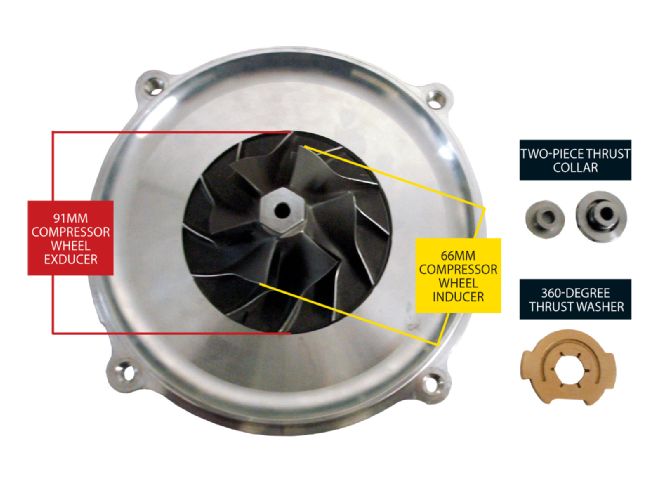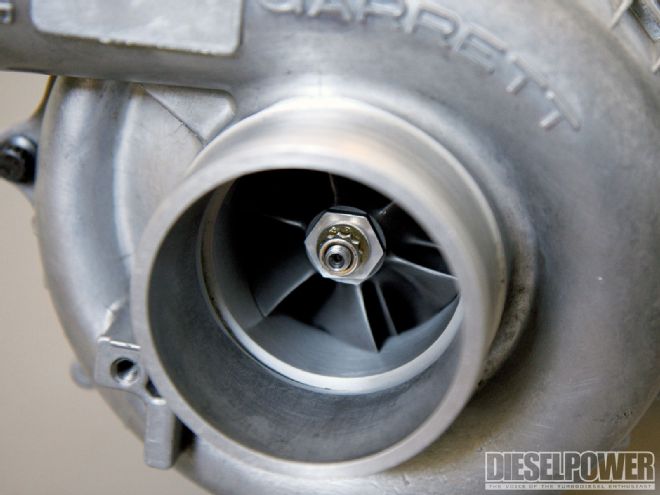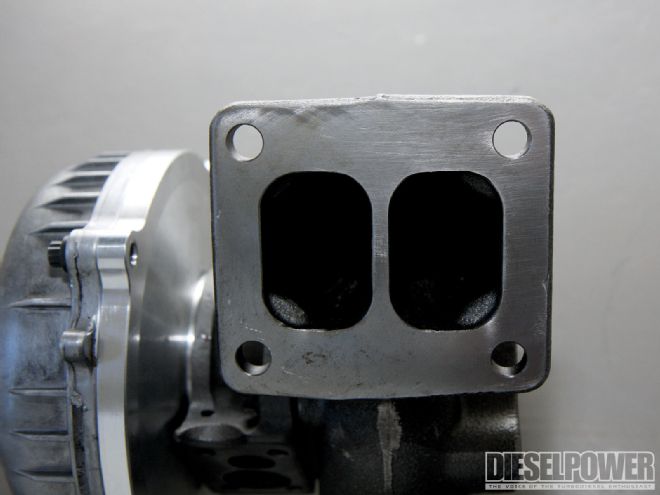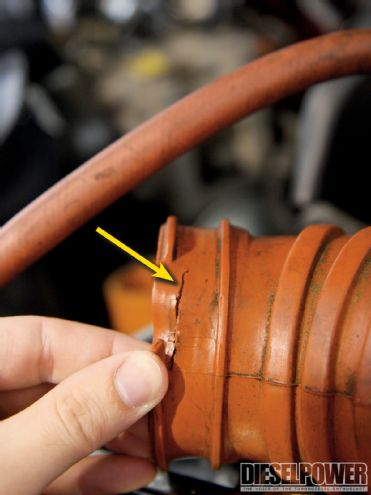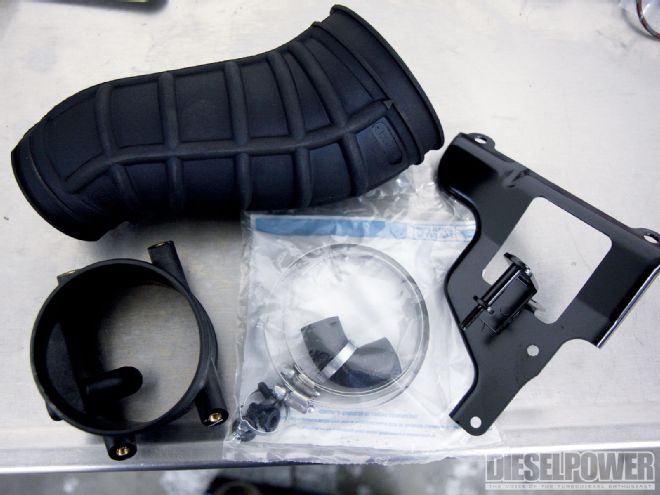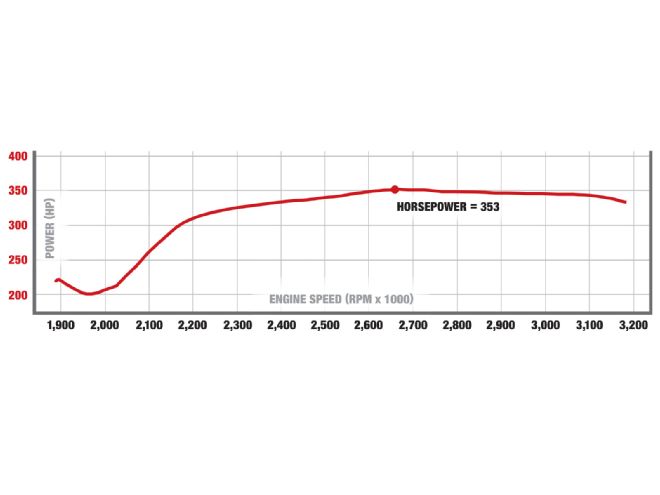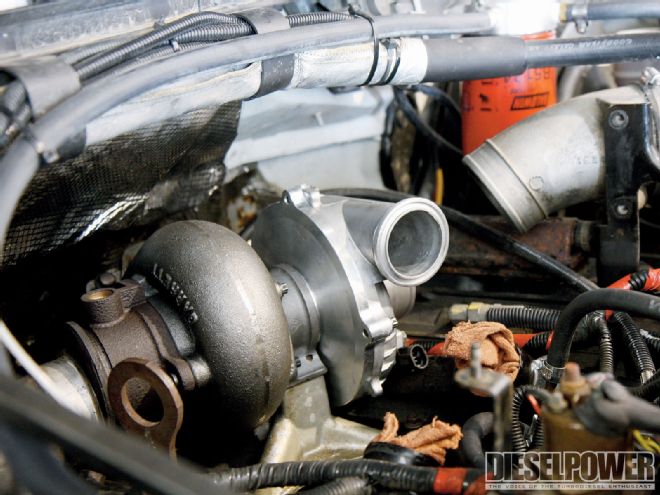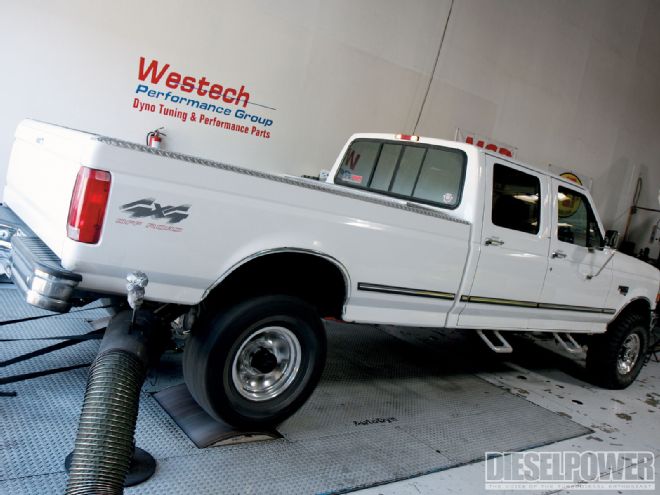For the last 18 months we've been transforming our '97 Ford F-350 into the magazine's tow rig. For more pulling power, we installed a set of Stage 1 injectors and an electric fuel system, upgraded the high-pressure oil pump, and added a custom six-position chip. Other pertinent upgrades included a tow-ready transmission; an intercooler; boost, transmission, and pyrometer gauges; and even an aftermarket rear differential cover. Perhaps the last piece of the puzzle was finding the right turbo to let our 7.3L Power Stroke breathe better.

| 1997 Ford F350 Bolt In Turbo installation
Turbo Criteria
First and foremost, we needed a turbo that would cool the truck's EGT considerably; be capable of handling 40 psi of boost; work with our existing pedestal, intercooler, and exhaust plumbing; and wouldn't cost a fortune. We took our list of needs to the experts at Comp Turbo, which quickly recommended its TP38 turbo. A simple, drop-in turbo solution makes life easier, especially for the '941/2 to '99 7.3L Power Stroke crowd, in which few aftermarket turbo options exist.
Larger Compressor Wheel
The best way to make a stock turbo move more air is to upgrade its compressor wheel. The Comp Turbo TP38 utilizes a wheel similar to the Garrett GTP38R ball-bearing turbo (a popular turbo in the '991/2 to '03 7.3L segment), which has an inducer diameter of 66 mm, and an exducer diameter of 91 mm (bigger than the GTP38R's 88mm exducer). Making the larger compressor wheel fit required a custom back plate and a ported compressor inlet. The turbine side of the Comp Turbo TP38 is left alone due to the factory, 10-blade turbine wheel being known to flow well in our type of application (300 to 425 hp), and the large 1.15 A/R non-wastegated turbine housing will help keep EGT down and drive pressure reasonable.

| 1997 Ford F350 Bolt In Turbo turbo
Upgraded Thrust Bearing
The most underappreciated part of a turbo is its center cartridge, where the turbo's shaft support exists. You can add all the wild housings and compressor or turbine wheels you want, but this area is at the heart of the unit's overall durability. It's a common failure point when factory turbos are asked to handle two to three times the thrust seen at stock power levels. And while the Comp Turbo TP38 uses journal bearings (because oil lubrication is vital), its thrust bearing assembly is upgraded from the stock 270-degree unit to a 360-degree unit. What does this mean? A 360-degree thrust bearing assembly provides a full circle of lubrication around the shaft, whereas a 270-degree unit only lubricates 66 percent of it. Because the thrust bearing assembly is located at the compressor end of the shaft, the 360-degree assembly also helps protect the turbo from surging (often the result of increased compressor wheel size).
After a quick trip over to OC Diesel Shop to install the turbo, we immediately began testing it out. Right away, we discovered how well it performed in elevation, how much stronger the truck felt on the top end, and noticed a big reduction in exhaust gas temperature. We concluded our testing by strapping the '97 back to the dyno to see how much extra horsepower it netted us. In the coming months we'll be hooking the truck to a trailer to see how it performs with a load in tow.
Stock vs. Modified
STOCK GARRETT TP38
Compressor wheel inducer diameter:
59.87 mm (60 mm)
Compressor wheel exducer diameter:
80 mm
Compressor housing A/R:
1.10
Turbine wheel inducer diameter:
76.2 mm
Turbine wheel exducer diameter:
69.84 mm (70 mm)
Turbine housing A/R:
1.15

| 1997 Ford F350 Bolt In Turbo stock Garrett TP38
COMP TURBO TP38
Compressor wheel inducer diameter:
66 mm
Compressor wheel exducer diameter:
91 mm
Ported compressor inlet, housing A/R:
1.10
*Turbine wheel inducer diameter:
76.2 mm
*Turbine wheel exducer diameter:
69.84 mm (70 mm)
*Turbine housing A/R:
1.15
* stock turbine wheel and housing werent necessary to upgrade
Price: $1,000 (with core included)

| 1997 Ford F350 Bolt In Turbo comp Turbo TP38
Less Smoke And Reduced Egt:
While hot-rodding around town, our smoke cleaned up to a very light haze at wide-open throttle and the truck pulled quite a bit harder on the top end. For performance and cleanliness at the tailpipe, its airflow is definitely a good match for our Stage 1 injectors.
At highway speeds, a drop in EGT of approximately 75 to 100 degrees was apparent. More importantly, when letting the truck shift through the gears at wide-open throttle, EGT was 150 to 200 degrees cooler. In fact, peak EGT never exceeded 1,350 degrees on the street-even using our hottest tune. In our tow setting the truck never exceeded 1,000 degrees at 4,000 feet of elevation.
What Power Level It's Good For:
Comp Turbo recommends its turbo be run on 7.3L Power Strokes with Stage 2 injectors or smaller, or trucks between 300 hp to 425 hp at the wheels. If you're like us and are always looking for more power, this turbo can still provide enough airflow to handle bigger injectors. The fact that it's efficient and durable to approximately 40 psi of boost makes it ideal for Stage 2 and even detuned hybrid injector applications.
